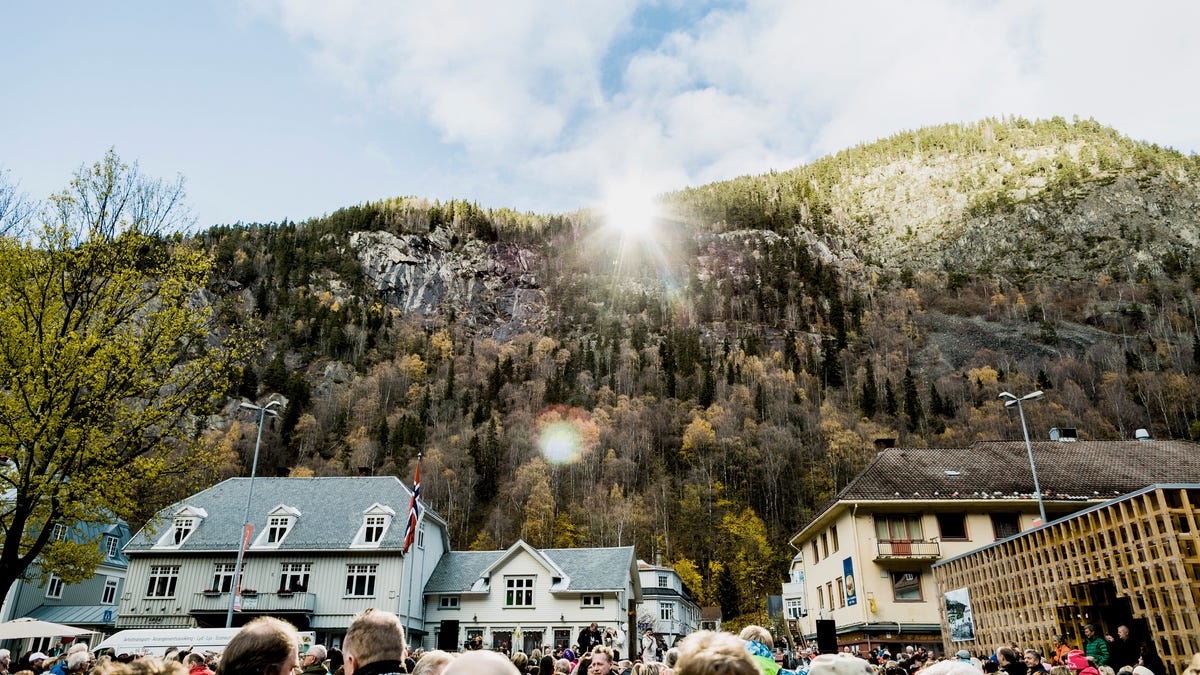Giant mirrors shine winter sun on dark Norwegian town
Three remote-controlled mountaintop mirrors now reflect light on the shady valley town of Rjukan, which has never seen sunlight during winter.

Residents of a remote Norwegian village are getting their first glimpse of winter sunlight, thanks to giant remote-controlled mirrors that reflect the sun's rays.
Nestled deep in a valley between steep mountains, Rjukan is characterized by dark, sunless days between September and March. But now, three 183-square-foot mirrors placed in the mountains surrounding the small town reflect natural sunlight down onto the town square.
At an inauguration ceremony on Wednesday, residents of Rjukan in sunglasses cheered, waved Norwegian flags, and even lounged in sun chairs in the 45-degree weather. Smiling kids sported suns painted on their cheeks.
Prior to the mirrors' arrival, those same residents had to catch a gondola to grab a few rays in the dark winter months. The founder of the town, industrialist Sam Eyde, had the cable car built in 1928 to take residents up the hill and into the sunlight. He first came up with the idea for a sun mirror, or "solspeil," even earlier, in 1913.
The tilted, industrial-grade mirrors, brought in by helicopter, sit on a platform about 1,476 feet above the center of the Southern Norwegian town.
Funded by a combination of public and private dollars, they're powered by solar and wind energy and remotely controlled by computers programmed to follow the sun's course across the sky and reflect it down into part of the town on the valley floor.
Sunshine, or lack thereof, can have a dramatic effect on mood and energy levels, studies have shown. And while much of Norway may be accustomed to sunless winters, Karin Ro, who runs Rjukan's tourism authority, says the little town about 93 miles west of Oslo can be a tough place to live.
"People need sun," she said in the CBSNews video below. "If people get sun they will be more healthy and they will work better."
The idea for mountaintop mirrors kicked around Rjukan and environs for a century until local artist Martin Andersen revived it in 2005.
But this isn't the first time Rjukan has gotten a boost of light. When two other Norwegian artists created a giant glowing light sculpture and took it road-tripping through the shadiest regions of the country earlier this year, the fake sun stopped to hang from The Culture House in Rjukan.
As for the new mirrors, they could end up bringing another bit of brightness to Rjukan. The town's mayor, Reidar Engell Olsen, thinks they might just boost tourism to the town.

